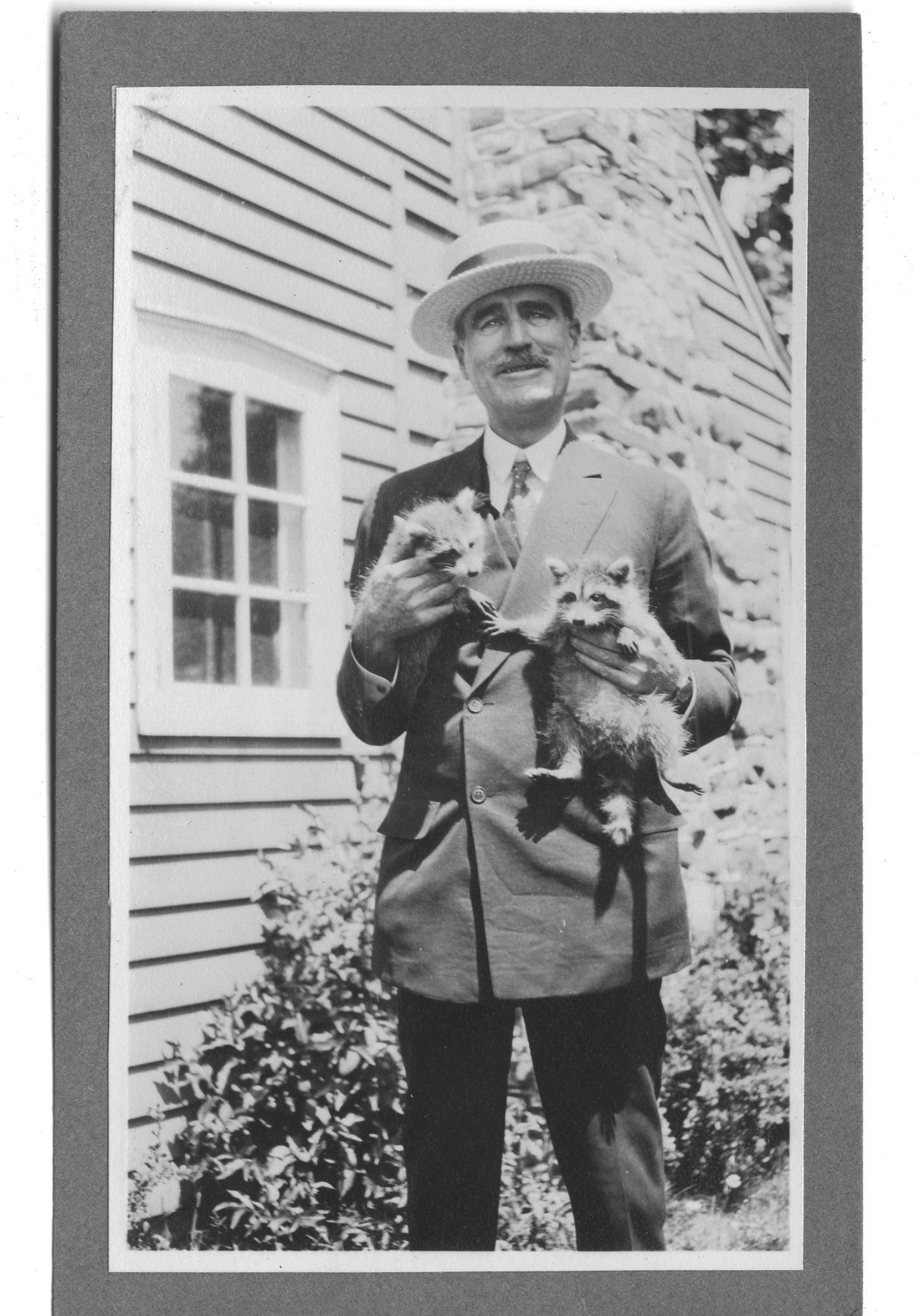
Authors

Stephen Edwin King was born the second son of Donald and Nellie Ruth Pillsbury King. After his father left them when Stephen was two, he and his older brother, David, were raised by his mother. Parts of his childhood were spent in Fort Wayne, Indiana, where his father's family was at the time, and in Stratford, Connecticut. When Stephen was eleven, his mother brought her children back to Durham, Maine, for good. Her parents, Guy and Nellie Pillsbury, had become incapacitated with old age, and Ruth King was persuaded by her sisters to take over the physical care of them. Other family members provided a small house in Durham and financial support. After Stephen's grandparents passed away, Mrs. King found work in the kitchens of Pineland, a nearby residential facility for the mentally challenged. Stephen attended the grammar school in Durham and Lisbon Falls High School, graduating in 1966. From his sophomore year at the University of Maine at Orono, he wrote a weekly column for the school newspaper, THE MAINE CAMPUS. He was also active in student politics, serving as a member of the Student Senate. He came to support the anti-war movement on the Orono campus, arriving at his stance from a conservative view that the war in Vietnam was unconstitutional. He graduated in 1970, with a B.A. in English and qualified to teach on the high school level. A draft board examination immediately post-graduation found him 4-F on grounds of high blood pressure, limited vision, flat feet, and punctured eardrums. He met Tabitha Spruce in the stacks of the Fogler Library at the University, where they both worked as students; they married in January of 1971. As Stephen was unable to find placement as a teacher immediately, the Kings lived on his earnings as a laborer at an industrial laundry, and her student loan and savings, with an occasional boost from a short story sale to men's magazines. Stephen made his first professional short story sale ("The Glass Floor") to Startling Mystery Stories in 1967. Throughout the early years of his marriage, he continued to sell stories to men's magazines. Many were gathered into the Night Shift collection or appeared in other anthologies. In the fall of 1971, Stephen began teaching English at Hampden Academy, the public high school in Hampden, Maine. Writing in the evenings and on the weekends, he continued to produce short stories and to work on novels.

Patricia Highsmith was an American novelist who is known mainly for her psychological crime thrillers which have led to more than two dozen film adaptations over the years. She lived with her grandmother, mother and later step-father (her mother divorced her natural father six months before 'Patsy' was born and married Stanley Highsmith) in Fort Worth before moving with her parents to New York in 1927 but returned to live with her grandmother for a year in 1933. Returning to her parents in New York, she attended public schools in New York City and later graduated from Barnard College in 1942. Shortly after graduation her short story 'The Heroine' was published in the Harper's Bazaar magazine and it was selected as one of the 22 best stories that appeared in American magazines in 1945 and it won the O Henry award for short stories in 1946. She continued to write short stories, many of them comic book stories, and regularly earned herself a weekly $55 pay-check. During this period of her life she lived variously in New York and Mexico. Her first suspense novel 'Strangers on a Train' published in 1950 was an immediate success with public and critics alike. The novel has been adapted for the screen three times, most notably by Alfred Hitchcock in 1951. In 1955 her anti-hero Tom Ripley appeared in the splendid 'The Talented Mr Ripley', a book that was awarded the Grand Prix de Litterature Policiere as the best foreign mystery novel translated into French in 1957. This book, too, has been the subject of a number of film versions. Ripley appeared again in 'Ripley Under Ground' in 1970, in 'Ripley's Game' in 1974, 'The boy who Followed Ripley' in 1980 and in 'Ripley Under Water' in 1991. Along with her acclaimed series about Ripley, she wrote 22 novels and eight short story collections plus many other short stories, often macabre, satirical or tinged with black humour. She also wrote one novel, non-mystery, under the name Claire Morgan , plus a work of non-fiction 'Plotting and Writing Suspense Fiction' and a co-written book of children's verse, 'Miranda the Panda Is on the Veranda'. She latterly lived in England and France and was more popular in England than in her native United States. Her novel 'Deep Water', 1957, was called by the Sunday Times one of the "most brilliant analyses of psychosis in America" and Julian Symons once wrote of her "Miss Highsmith is the writer who fuses character and plot most successfully ... the most important crime novelist at present in practice." In addition, Michael Dirda observed "Europeans honoured her as a psychological novelist, part of an existentialist tradition represented by her own favorite writers, in particular Dostoevsky, Conrad, Kafka, Gide, and Camus." She died of leukemia in Locarno, Switzerland on 4 February 1995 and her last novel, 'Small g: a Summer Idyll', was published posthumously a month later. Gerry Wolstenholme July 2010

Theodore Sturgeon (1918–1985) is considered one of the godfathers of contemporary science fiction and dark fantasy. The author of numerous acclaimed short stories and novels, among them the classics More Than Human, Venus Plus X, and To Marry Medusa, Sturgeon also wrote for television and holds among his credits two episodes of the original 1960s Star Trek series, for which he created the Vulcan mating ritual and the expression “Live long and prosper.” He is also credited as the inspiration for Kurt Vonnegut’s recurring fictional character Kilgore Trout. Sturgeon is the recipient of the Hugo Award, the Nebula Award, and the International Fantasy Award. In 2000, he was posthumously honored with a World Fantasy Award for Life Achievement.

Hugh Barnett Cave was a prolific writer of pulp fiction who also excelled in other genres. Sources differ as to when Cave sold his first story: some say it was while he still attended Brookline High School, others cite "Island Ordeal", written at age 19 in 1929 while still working for the vanity press. In his early career he contributed to such pulp magazines as Astounding, Black Mask, and Weird Tales. By his own estimate, in the 1930s alone, he published roughly 800 short stories in nearly 100 periodicals under a number of pseudonyms. Of particular interest during this time was his series featuring an independent gentleman of courageous action and questionable morals called simply The Eel. These adventures appeared in the late 1930s and early 40s under the pen name Justin Case. Cave was also one of the most successful contributors to the weird menace or "shudder pulps" of the 1930s. In 1943, drawing on his experience as a war reporter, he authored one of his most highly regarded novels, Long Were the Nights, telling of the first PT boats at Guadalcanal. He also wrote a number of other books on the war in the Pacific during this period. During his post-war sojourn in Haiti, he became so familiar with the religion of Voodoo that he published Haiti: High Road to Adventure, a nonfiction work critically acclaimed as the "best report on voodoo in English." His Caribbean experiences led to his best-selling Voodoo-themed novel, The Cross On The Drum (1959), an interracial story in which a white Christian missionary falls in love with a black Voodoo priest's sister. During this midpoint in his career Cave advanced his writing to the "slick" magazines, including Collier's, Family Circle, Ladies' Home Journal, Redbook, and the Saturday Evening Post. It was in this latter publication, in 1959, that "The Mission," his most popular short story, appeared—subsequently issued in hardcover by Doubleday, reprinted in textbooks, and translated into a number of languages. But his career took a dip in the early 1970s. According to The Guardian, with the golden era of pulp fiction now in the past, Cave's "only regular market was writing romance for women's magazines." He was rediscovered, however, by Karl Edward Wagner, who published Murgunstrumm and Others, a horror story collection that won Cave the 1978 World Fantasy Award. Other collections followed and Cave also published new horror fiction. His later career included the publication in the late 1970s and early 1980s of four successful fantasy novels: Legion of the Dead (1979), The Nebulon Horror (1980), The Evil (1981), and Shades of Evil (1982). Two other notable late works are Lucifer's Eye (1991) and The Mountains of Madness (2004). Moreover, Cave took naturally to the Internet, championing the e-book to such an extent that electronic versions of his stories can readily be purchased online. Over his entire career he wrote more than 1,000 short stories in nearly all genres (though he is best remembered for his horror and crime pieces), approximately forty novels, and a notable body of nonfiction. He received the Phoenix Award as well as lifetime achievement awards from the International Horror Guild, the Horror Writers Association, and the World Fantasy Convention. (From Wikipedia.) Used the pseudonyms John Starr and Justin Case

Lilian Jackson Braun was an American writer. She is well-known for her light-hearted series of The Cat Who... mystery novels. The Cat Who books center around the life of former newspaper reporter James Qwilleran, and his two Siamese cats, KoKo and Yum Yum in the fictitious small town of Pickax located in Moose County, "400 miles north of everywhere." Although never formally stated in the books, the towns, counties and lifestyles described in the series are generally accepted to be a modeled after Bad Axe, Michigan (located in the "Michigan Thumb") where she resided with her husband for many years until the mid 1980's. Many also believe that the culture and history of the Upper peninsula of Michigan are represented in the series as well, which is quite possible as it is indeed a fictitious location. Lilian Jackson Braun began her writing career as a teenager, contributing sports poetry for the Detroit News. She later began working as an advertising copywriter for many of Detroit's department stores. After that stint, she worked at the Detroit Free Press as the "Good Living" editor for 30 years. She retired from the Free Press in 1978. Between 1966 and 1968, she published three novels to critical acclaim: The Cat Who Could Read Backwards, The Cat Who Ate Danish Modern and The Cat Who Turned On and Off. In 1966, The New York Times labeled Braun, "the new detective of the year." The rising mystery author disappeared from the publishing scene for 18 years. The blame came from the fact that mystery novels were starting to focus on sex, violence, and foul language, and Braun's light-hearted books were not welcome in this new territory. It wasn't until 1986 that the Berkley Publishing Group reintroduced Braun to the public with the publication of an original paperback, The Cat Who Saw Red. Within two years, Berkeley released four new novels in paperback and reprinted the three mysteries from the sixties. Braun's series became an instant best seller once again. In January 2007 the twenty-ninth novel in the series, The Cat Who Had 60 Whiskers, was released in hardcover by the Penguin Group. Not much was really known about Braun, as she prefered to keep her private life that way. For years, publishers have given inaccurate accounts of her year of birth, which has remained unknown until she openly acknowledged her age in an interview for the Detroit News in January 2005.

aka Terry Devane Jeremiah Healy was the creator of the John Francis Cuddy private-investigator series and the author of several legal thrillers. A former sheriff's officer and military police captain, Healy was also a graduate of Rutgers College and the Harvard Law School. He practiced law in Boston before teaching for eighteen years at the New England School of Law. His first novel, BLUNT DARTS, was published in 1984 and introduced Cuddy, the Boston-based private eye who has become Healy¹s best-known character. Moral, honest—and violent, when need-be—Cuddy makes his living solving cases that have fallen through the cracks of the formal judicial system. Of his thirteen Cuddy novels and two collections of short stories, fifteen have either won or been nominated for the Shamus Award. www.JeremiahHealy.com Series: * John Francis Cuddy

aka Barnaby Ross. "Ellery Queen" was a pen name created and shared by two cousins, Frederic Dannay (1905-1982) and Manfred B. Lee (1905-1971), as well as the name of their most famous detective. Born in Brooklyn, they spent forty two years writing, editing, and anthologizing under the name, gaining a reputation as the foremost American authors of the Golden Age "fair play" mystery. Although eventually famous on television and radio, Queen's first appearance came in 1928 when the cousins won a mystery-writing contest with the book that would eventually be published as The Roman Hat Mystery. Their character was an amateur detective who used his spare time to assist his police inspector father in solving baffling crimes. Besides writing the Queen novels, Dannay and Lee cofounded Ellery Queen's Mystery Magazine, one of the most influential crime publications of all time. Although Dannay outlived his cousin by nine years, he retired Queen upon Lee's death. Several of the later "Ellery Queen" books were written by other authors, including Jack Vance, Avram Davidson, and Theodore Sturgeon.

